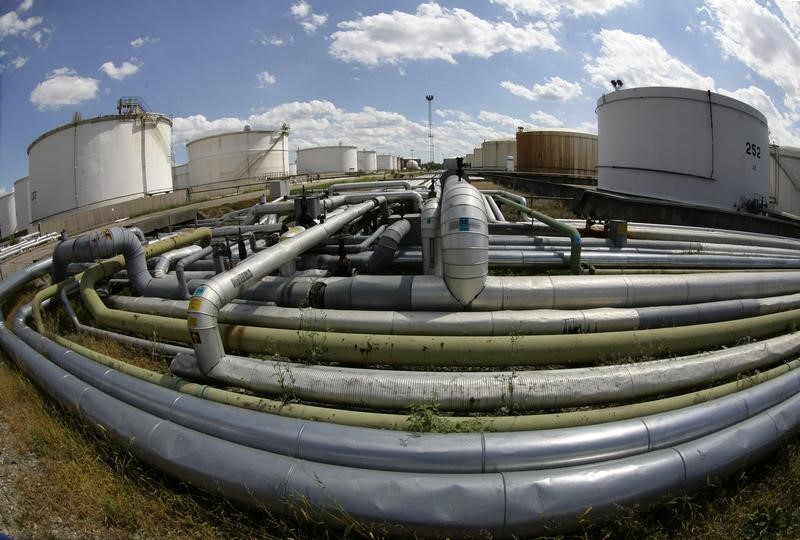By Henning Gloystein
SINGAPORE, May 4 (Reuters) - Oil prices stabilized on Wednesday after falling for two straight days on concerns that slowing demand and rising Middle East production would extend a global supply overhang.
International Brent crude futures LCOc1 were trading at $45.10 per barrel at 0140 GMT, up 13 cents, or 0.3 percent, from their last settlement. Brent has fallen more than 6 percent since April 29.
U.S. West Texas Intermediate (WTI) futures were up 8 cents, or 0.2 percent, at $43.73 a barrel.
The slight price increases followed a more than 6 percent fall since the end of April that was triggered by rising output from the Middle East and renewed signs of economic slowdown in Asia. big markets continue to disappoint: Japan sank further, China relapsed, and India slipped," said Frederic Neumann of HSBC in Hong Kong, adding that exports were "stuck below the waterline" and "local demand looks wobbly, too."
In the United States, the picture was less clear.
U.S. production has fallen from a peak of over 9.6 million barrels per day (bpd) in summer last year to just over 8.9 million bpd currently.
However, the country's crude inventories rose by 1.3 million barrels in the week to April 29 to 539.7 million barrels, according to data from the American Petroleum Institute, enough to meet global demand for almost a week.
Still, strong demand for refined products reduced stockpiles of gasoline, diesel and heating oil. to ongoing strong demand and further expectations of U.S. production cuts, BMI Research said on Wednesday that oil prices would likely rise in the short-term.
"We anticipate a strong pullback in non-OPEC supplies. We also expect some support from the U.S. (summer) driving season. Bloated crude stocks will thus unwind in the coming months," BMI said.
"We believe prices will strengthen above $50 per barrel, trading in a range of $50-$60 per barrel until the end of the year," it added.
